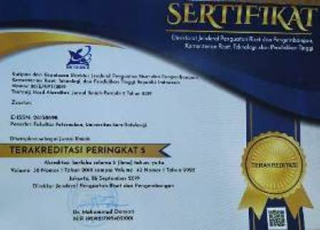ANALISIS RENTABILITAS USAHA TERNAK ITIK PETELUR DI DESA WOLAANG KECAMATAN LANGOWAN TIMUR KABUPATEN MINAHASA
Abstract
ABSTRACT
RENTABILITY ANALYSIS OF LAYING DUCK FARM AT THE WOLAANG VILLAGE LANGOWAN TIMUR DISTRICT OF MINAHASA REGENCY. Study was conducted at Wolaang village, East Lagowan district of Minahasa regency on August 8 to September 5, 2015. The objective of this study was to evaluate the rentability laying duck farm at the Wolaang village. Survey method was applied in this study. Wolaang village was defined as study location and chosen the purposive sampling based on consideration of the highest duck population (5924 heads), widest wet rise areas of 161.35 ha, and more than 20 animal farmers. Data of primary and secondary bases were used in this study. Rentability analysis model was applied using formula, R= L/M x 100%. Results showed that animal farmer education was 60 percents passed the elementary school, 25 percents passed junior high school and 15 percents passed senior high school. The period of raising animals of the 1- to 10-year experience was 25 percents, the period of the 11- to 20 year experience was 20 percents, that of the 21- to 30 year experience was 25 percents, that of the 31- to 40-year experience was 15 percents, that of the 41- to 50-year experience was 10 percents, and that of more than 50-year experience was 5 percents. The rentability analysis found the value of 69 percents indicating that the use of infestation financial capital of IDR 100,000.- was able to gain the benefit of the IDR 60,000.-. The reach of the values of R was more than the deposit rent of the BRI bank of 6.5 percents. Therefore, it can be concluded that farm rentability of laying duck was more than the BRI bank deposit rent.
Key word: Laying duck, rentability.
Full Text:
PDFDOI: https://doi.org/10.35792/zot.36.1.2016.10470
Refbacks
- There are currently no refbacks.
ALAMAT REDAKSI:
Fakultas Peternakan Universitas Sam Ratulangi
Jalan Kampus, Bahu Manado, 95115
Telp. 0431-863186, E mail : jzootek@yahoo.com











